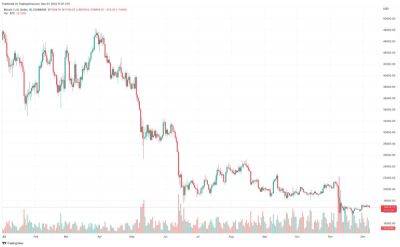DXY bounces at major support, reducing Bitcoin’s chance at breaking the $17.2K resistance
On Dec. 2, the United States dollar index (DXY), an index that measures the dollar's strength against a basket of top foreign currencies, reached 104.40 which was the lowest level seen in 5 months.
To recap, the U.S. dollar's weight against the basket of top foreign currencies grew by 19.6% in 2022 until late September as investors looked for protection against the impact of a hawkish Federal Reserve and, more recently, the rising energy costs and effect of high inflation.
The U.S. dollar's retreat may have been an interim correction to neutralize its "overbought" condition, as the 114.60 peak was the highest level in 20 years. Still, its inverse correlation with Bitcoin (BTC) remains strong, as pointed out by analyst Thecryer on Twitter:
$DXY $BTC pic.twitter.com/jG9HmYN8Mg
Notice how the intraday DXY retrace to 105.50 from the 104.40 low happened when Bitcoin faced a $230 flash crash to $16,790. Such movements reinforce how cryptocurrencies' performance remains codependent on traditional markets.
Bitcoin enthusiast Aldo the Apache noticed that the DXY "bullish divergence at support" occurred as the S&P 500 stock market index struggled with a vital resistance level.
$DXY with bullish divergence at support while $SPX is coming is at major resistence. What does this mean for $BTC? Another leg down IMO. pic.twitter.com/PK3Ku0zZrl
According to the analyst, the net impact for Bitcoin is negative if the expected trajectory confirms with the U.S. dollar gaining strength against major fiat currencies, and the stock market faces another leg down.
On-chain metrics are also painting a potentially bearish picture as Bitcoin miners, feared to be entering a new wave of capitulation, have upped sales of BTC reserves. For instance, the record
Read more on cointelegraph.com




















